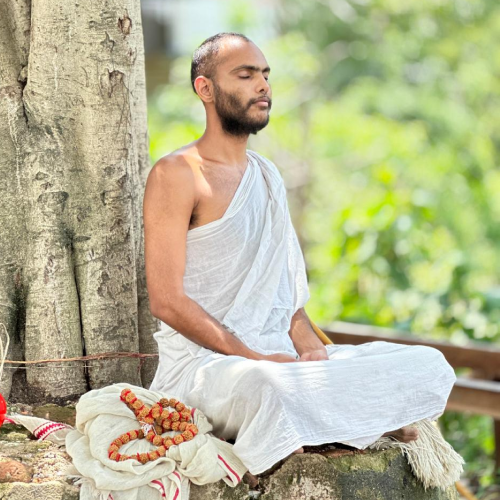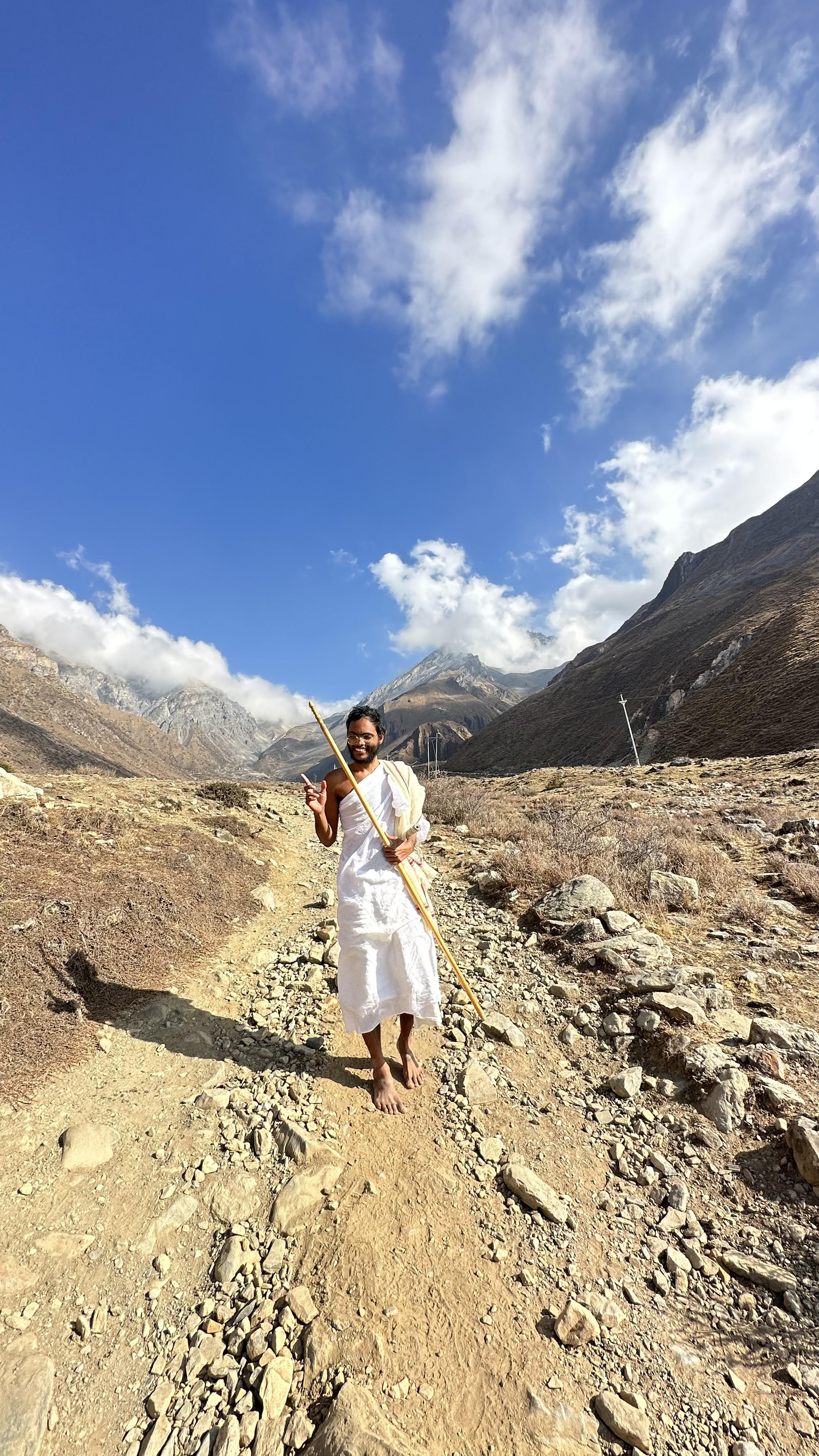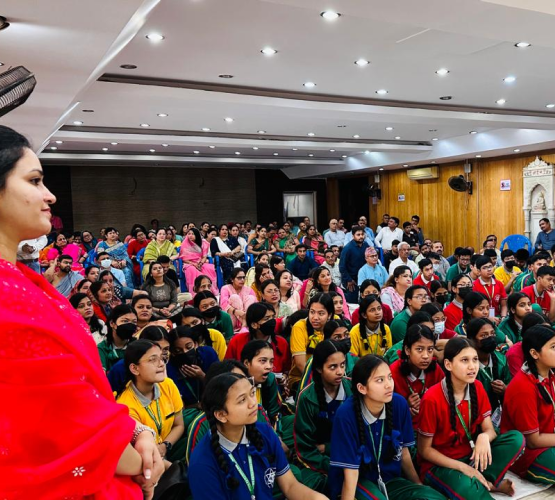Description About Samkit Saar

Who we are and what is Samkit Saar:
It involves discerning the true nature of the self, the universe, and the path to liberation from worldly attachments. “Saar” denotes the quintessence or essence. Together, “Samkit Saar” encapsulates the core principles of Jain philosophy, emphasizing the importance of inner purity, ethical living, and the pursuit of spiritual truth. It guides followers towards achieving harmony with oneself, others, and the cosmos through self-realization and moral integrity. In-depth travel-piece exploring the relationship between Jainism and the “Himalaya” Let’s set off on this adventure together. View the locations and their significance in relation to Jainism here.
Inception of Samkit Saar
How it started?
In the past, the majority of Jain sages and Acharyas would
go to the Himalayas to meditate.
But things aren’t like this anymore. Thousands of years ago, the country was quite different,
and the Jain monks were exceptionally strong to withstand hardship. Their body used to be
moist, and they could withstand extremely high and low temperatures. Alternatively, there
were other techniques from guru traditions that allowed devotees to maintain their
equilibrium even in extreme hot or cold weather. All of those techniques, abilities, and
practices have vanished now, and even if they do remain, only a very small number of sadhus
will have access to them.
Second, there were numerous Jain pilgrimage sites in the Himalayas throughout ancient
times, including Ashtapada (Kailash), Parasnath, Kedarparshvanath, Namiunparasnath,
Muktinath, Syambhu Adinath, and others. These sites are described in ‘sastras and sastras’
even today. But from then on, Jainism vanished because of the passage of time or unfortunate
incidents. As a result, Jain adherents/followers either departed from the Himalayas and settled
elsewhere, or they converted to Buddhism, Bonsai, Hinduism, etc. Research may further
needed for this conclusion however this has further initiated existence in number of other
reasons.
How It Started?
If we talk about the present, Jainism
is mostly divided into two divisions.
1. Shewtambar
2. Digambar.
Both are common in
India and in dependent states. Owing to the existence of ‘Shravakas’ and
‘Shravikas’ from both sects in India, penance and chanting are also performed at sacred
places by monks, sadhus, and Sadhviji where society (people) are found. Secondly, it is no
longer as simple to perform ‘Himalayan Sadhana’ as it was historically. Nowadays, it is quite
difficult for sadhus and Sadhvis to walk bare foot and visit such far-off locations in order to
perform sadhana. There are numerous mental, emotional, social, practical, and ideological
causes behind this. Even if we look at the history of the last 50 years a small number of Jain
monks have returned from their meditation retreats in the Himalayas and Badrinath.
Specifically, my mentor/Guruji was greatly inspired by the book ‘Samsmaran’, which was
written by ‘Shri Jambu Vijayji Marasa’ and detailed his Himalaya Pad Yatra. After
completing his sadhana until the Chaturmas in Delhi and Udaipur, Guruji received Devin
indications that he should continue his sadhana at Mukti Kshetra, or Muktinath, or the land of
Adinath Prabhu. And it seemed like everything was happening right in front of us—as if the
land was urging us to come closer and supporting us through all of the challenges. Dev
Guru’s Grace Was Helping More Than Expected.
Then a feeling stirred in the heart, wherever we are going and will go, it should reach every
seeker, not only Jains, but also the places of pilgrimage and meditation and Jain monks who
like to experience this divine energy. All religious lovers should get information. A noble
sentiment drive us through this. Because we knew that in such circumstances, the visit of Jain
monks would be very important and rare, everyone should be aware of it and get benefits of
our experience and lesion learnt.
However, it was just a feeling and there was no conversation about how to make it reach
everyone. We travelled from Udaipur to Shivpuri in Madhya Pradesh while on the same tour,
Jain devotee ‘Shri Saurav Shankhlaji’ was concerned about our plans and the upcoming
pilgrimage since he thought the arrangements for the pilgrimage in Uttar Pradesh would be
extremely challenging. Jain settlements are restricted to a small number of cities. Lastly, he
formed the group “Samkit Saar” on his phone since he had the lovely feeling that everyone
should know about Gurudev wherever he was and his true followers get the correct
information about Guruji’s Vihar yatra.
Our Vision
Vision of Samkit Saar
Vision of Samkit Saar
- Jainism is for everyone
- Jainism and science
- Message for world peace from Jainism
- To spread the information about Jainism and its approach towards life around the world
- Information about Padyatras (Vihar), Ethics, and Ideology of Jain Gurus
- Distinctive information about rare and forgotten places
- Asceticism/Sadhana methods: Meditation, Yoga, Chanting, Penance Yoga
- Tradition of Jain Gurus
Guruji's Details
Guruji's Impactful Contributions Unveiled




history of samkit saar
How Did The Idea Of Samkit Saar Originate?
We Empower Individuals to Cultivate Profound Spiritual Awareness and Foster Connections with Jain Traditions, Pilgrimages, and Meditative Practices.
How did the idea of Samkit Saar originate?
Samkit Saar was born when Guruji was meditating in “Himalaya”. Since the traditional methods vanished with time and the dwindling influence of Jainism in the Himalayas, as well as the writings and Himalaya Pad Yatra of Shri Jambu Vijayji Marasa, Guruji sensed a calling. This is how Samkit Saar started taking shape.
Is Samkit Saar exclusively for Jains, or is it open to individuals of all faiths?
Samkit Saar is inclusive and open to individuals of all faiths. The initiative aims to share spiritual insights and practices with a broader audience, fostering understanding and unity among people from diverse backgrounds.
What is the primary goal of Samkit Saar?
Samkit Saar strives to globally disseminate information about Jainism, safeguard and share ancient traditions, arrange pilgrimages and yatras, and inspire individuals toward deep spiritual awareness. The focus is on ensuring Jain teachings are accessible to a diverse audience, fostering unity and understanding among all seekers.

